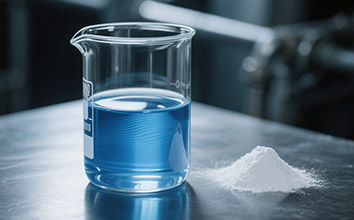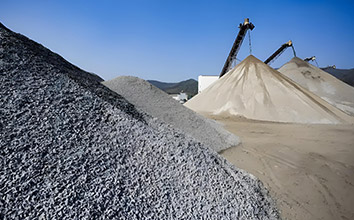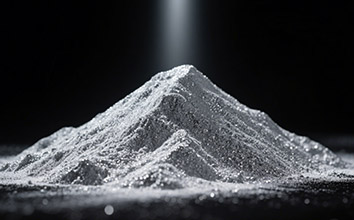This lithium battery material production line is an integrated production line customized by a customer of a lithium iron phosphate factory located in Kitakyushu, Japan in 2022. It is a complete screening and conveying solution designed specifically for positive electrode materials, negative electrode materials, and other materials. It adopts a dust-free design to meet the strict safety standards of local production, and is fully automated. The core components of the system equipment use high-end imported accessories to ensure the stability and reliability of the production line equipment, providing strong guarantees for customers to increase production efficiency and ensure profits.

[Raw material feeding and conveying unloading screening dust removal storage finished product output]
·【Feeding Equipment】 Vacuum Feeding Machine: A specialized vacuum conveyor for powder particles, using pipeline transportation to ensure dust-free operation throughout the entire process, with controllable loading and unloading volumes. And it can customize explosion-proof and other functions for different scenarios.
·【Screening Equipment】 Ultrasonic vibrating screen: The interior is coated with customized PTFE spray coating to prevent material from coming into contact with metal, completely solving the problem of clogging caused by static electricity and viscosity.
·Pulse bag dust collector: collects dust generated during the screening process (such as negative electrode toner) to avoid dust pollution in the workshop environment. At the same time, the recovered fine powder can be reused, meeting the "zero waste" production needs of the battery industry.
·【Storage Equipment】 Feeding Buffer Warehouse: Capacity 0.5-2m ³, equipped with a material level sensor to prevent material from impacting the screen body, while achieving automatic linkage of "full material shutdown and empty material start".
·【Auxiliary equipment】
Magnetic separator: Strong magnetic iron removal, adapted to the "low iron requirements" of battery materials, removes metal impurities and agglomerated particles in the raw materials in advance, avoiding impurities scratching the sieve or affecting the purity of battery materials (such as the iron content of positive electrode materials should be ≤ 50ppm).
Unloading valve: located at the discharge port of the silo, used to control the storage speed, with a closed structure to prevent dust overflow.
Level gauge: Real time monitoring of material quantity in the silo to avoid full or empty storage.
PLC control system: Through a programmable logic controller, production parameters (such as conveying speed, discharge volume, dust removal start stop time, etc.) are set, and touch screens are equipped to automatically control the operation of various equipment. The real-time display of equipment status (such as fault alarms and material level information) is convenient for operators to monitor and adjust.
The lithium battery material ultrasonic vibrating screen production line is a one-stop solution designed specifically for dust-free screening and transportation of battery materials. The commonly processed materials include graphite, lithium iron phosphate, ternary positive electrode materials, lithium cobalt oxide, lithium manganese oxide, silicon carbon composite powder, carbon black, positive electrode powder, negative electrode powder, etc





Material guarantee: 316L stainless steel contact material parts, internally sprayed with PTFE, corrosion-resistant, no impurities leaching, ensuring that the iron content of the positive electrode material is ≤ 50ppm and the purity of the negative electrode material is ≥ 99.9%. Battery safety requirements;
Screening accuracy: The ultrasonic system solves the problem of "hole blockage", with a particle size deviation of ≤± 3%. For example, after the classification of ternary materials, the proportion of qualified materials is ≥ 95%, far exceeding that of ordinary vibrating screens (deviation ± 5%), and improving battery consistency (capacity deviation ≤ 2%).
Processing capacity advantage: The processing capacity of a single host can reach 0.5-5t/h (adjusted according to material particle size), and with multiple parallel designs, it can meet the needs of a 10000 ton battery material production line;
Raw material utilization rate: rough material reflux+dust recovery, overall raw material utilization rate ≥ 98%, reducing waste (such as negative electrode toner recycling can reduce raw material costs by 10% -15%);
Automation reduces manpower: full process linkage control, one person can monitor multiple production lines, reducing labor costs by more than 50%.
Environmental compliance: Sealed design+pulse dust removal, dust emission concentration ≤ 10mg/m ³, in line with environmental production requirements.
Long life design: The core components (ultrasonic transducer, vibration motor) have a lifespan of ≥ 8000h, and the screen mesh is made of wear-resistant material (with a lifespan of ≥ 300h). The overall equipment failure rate is ≤ 2%/year, reducing operation and maintenance costs.
Intelligent operation and maintenance: PLC+MES docking, realizing real-time traceability of production data, fault warning response time ≤ 10s, reducing downtime losses (downtime reduced by 30%);
Flexible customization: The number of mesh layers, feeding method, and cleaning module can be customized according to the type of battery material (powder, positive/negative electrode).
Silent operation: soundproof hood+shock-absorbing design, workshop noise ≤ 85dB, improves the working environment for workers, and meets the occupational health standards of industrial enterprises.

